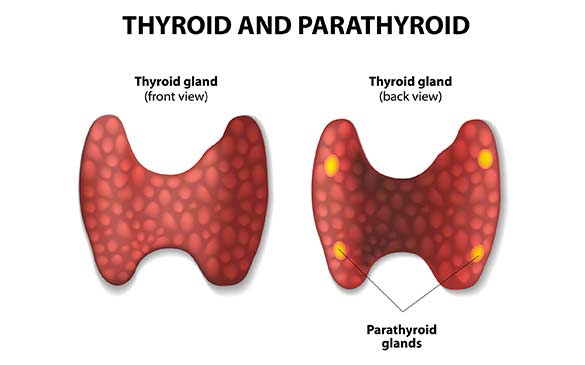
Thyroidectomy is the partial or complete surgical removal of the thyroid gland.
Located at the base of the neck, a small, butterfly-shaped gland called the thyroid is responsible for producing hormones that impact multiple areas of the body, including the heart, kidneys, and brain. Normally functioning thyroids produce enough hormones to keep a body working as it should, but if that doesn’t happen, it could lead to thyroid disease.
- About 20 million Americans have some type of thyroid disease, and more than 12 percent of the population will develop the problem during their lifetime.
- Sometimes, the remedy for disease is a thyroidectomy.
About the Surgery
Patients undergoing this procedure have a thyroid disease or disorder. Most of the patients have thyroid cancer, but some other reasons for surgery are to treat noncancerous enlargements called goiters and those with hyperthyroidism, which results in too much thyroid hormone production.
During surgery, the incision location varies depending on the type of procedure. Conventional thyroidectomy involves an incision in the center of the neck, while endoscopic thyroidectomy includes several smaller incisions so that surgical instruments and a camera used to guide the doctor can fit through the cuts.
Robotic thyroidectomy involves incisions higher in the neck, in the chest or through the armpit. This procedure eliminates the scar left in the center of the neck, which is common with other types of thyroidectomy.
Each thyroidectomy has a different name to describe what is being removed:


- Total thyroidectomy: Complete thyroid gland removal.
- Thyroid lobectomy: Also called hemi-thyroidectomy. It is removal of one entire thyroid lobe.
- Partial thyroid lobectomy: The removal of part of one lobe.
- Isthmusectomy: Removal of the isthmus, which is a bridge connecting the thyroid lobes. This procedure is specifically for small tumors located in the bridge area.
- Thyroid lobectomy with isthmusectomy: When the isthmus is removed along with a lobe.
- Subtotal thyroidectomy: Removal of the isthmus, one entire lobe and part of the other lobe.
After Thyroidectomy
Surgery takes a few hours, and patients typically spend one night in a hospital. After a week or two, patients can return to work, and they have a follow up with the doctor within two to four weeks after surgery. There is always some risk with any surgery, but thyroidectomy is generally safe. A very small number of patients experience recurrent laryngeal nerve injury. Because this nerve controls vocal cords, damage could cause hoarseness. Less than one percent of patients develop permanent hoarseness. Another risk of this surgery is development of low blood calcium if the parathyroid glands located behind the thyroid are injured or removed. Patients who develop this must take calcium and vitamin D supplements.
Recognizing Causes and Symptoms
Some causes of thyroid problems include Grave’s Disease, pituitary gland malfunctions, cancer, Hashimoto’s disease and overexposure to iodine. Symptoms vary depending on if the problem is an over or underproduction of the hormone. They can include heat or cold sensitivity, fatigue, brittle nails or hair and hair loss, as well as unexplained weight gain or sudden weight loss, memory lapses, and anxiety. Because symptoms can be caused by other health issues, it’s best to check with a doctor for a thyroid-stimulating hormone (TSH) test.


